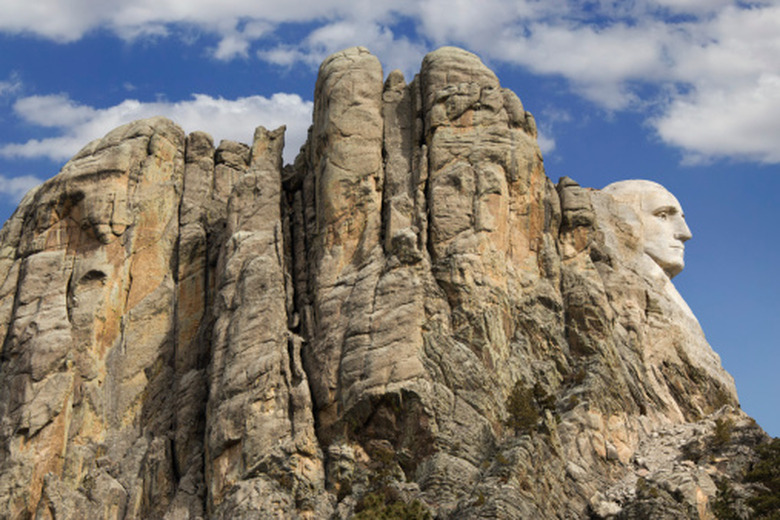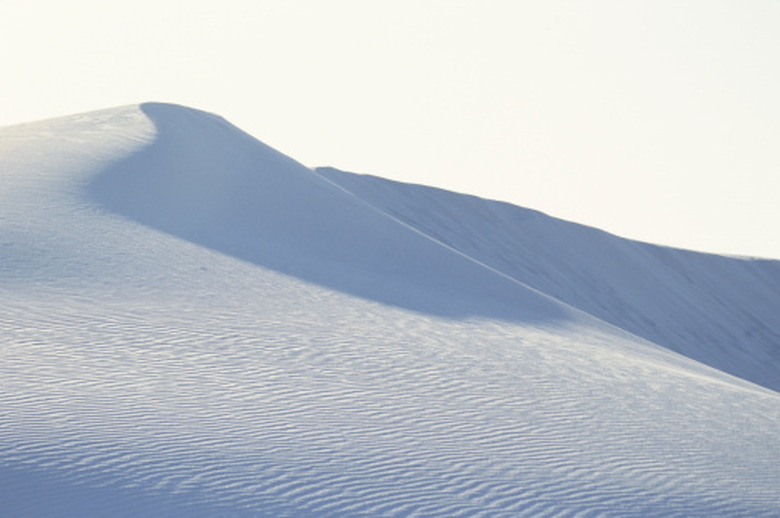Weathering Process Of Granite
Granite is an igneous rock that injects, or intrudes, as magma into Earth's crust and then cools. It consists of four main mineral compounds. Two of these are types of feldspar, a group of silica compounds that constitute the most abundant mineral group on Earth. Plagioclase feldspar is a compound of sodium and silica; potassic feldspar is a compound of potassium and silica. Granite also contains quartz, the second most abundant rock-forming mineral after feldspar. The fourth main mineral compound is mica, which in granite is a silica compound with a crystalline appearance resembling sheets of paper. Muscovite is mica with a high concentration of potassium. Biotite is mica with iron and magnesium. Each of these mineral groups weathers according to its own chemical properties.
Cooling
Cooling
Granite cools slowly within the Earth's crust. Feldspar, quartz and mica crystals form during the cooling. Vertical and horizontal fissures form within the rock mass as it contracts. The fissures expand to larger fractures as the rock cools further.
Wind
Wind
Wind, water and ice denude the soil and Earth's crust overlying the granite mass, exposing it to the atmosphere. The rock expands and contracts in reaction to changes in temperature. It shatters on the surface and the fractures widen to form crevices.
Hydrolysis
Hydrolysis
Hydrolysis is the chemical weathering of minerals by a mildly acidic water that forms when rains dissolves trace gases in the atmosphere. The reaction of feldspar minerals in granite with rainwater produces kaolinite, white clay known as "China clay" used in the production of porcelain, paper and glass. Kaolinite is most abundant over weathered granite in hot and moist tropical climates. Biotite and muscovite micas also weather by hydrolysis into kaolinite and release iron, potassium and magnesium into the surrounding soil as nutrients.
Quartz
Quartz
Quartz is very resistant to weathering. It cools down within the granite to form clear crystal veins. Trace iron colors the quartz pink to create rose quartz. Copper colors quartz green to form beryl. Hydrocarbon "seeps" color quartz violet to create amethysts. Rose quartz, beryl and amethyst are semiprecious stones. Smaller quartz crystals remain as grains in the soil or accumulate as sand on river banks and shorelines.
Cite This Article
MLA
Kielmas, Maria. "Weathering Process Of Granite" sciencing.com, https://www.sciencing.com/info-8604681-weathering-process-granite/. 9 January 2018.
APA
Kielmas, Maria. (2018, January 9). Weathering Process Of Granite. sciencing.com. Retrieved from https://www.sciencing.com/info-8604681-weathering-process-granite/
Chicago
Kielmas, Maria. Weathering Process Of Granite last modified March 24, 2022. https://www.sciencing.com/info-8604681-weathering-process-granite/

